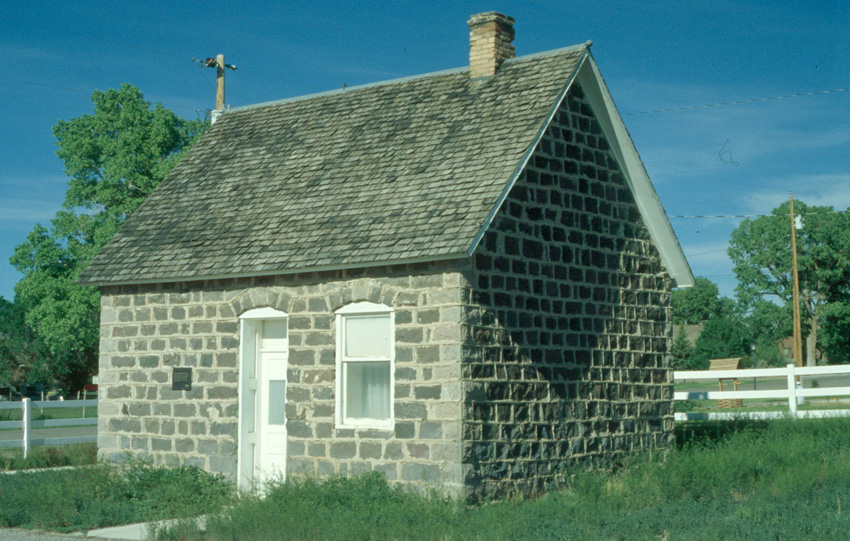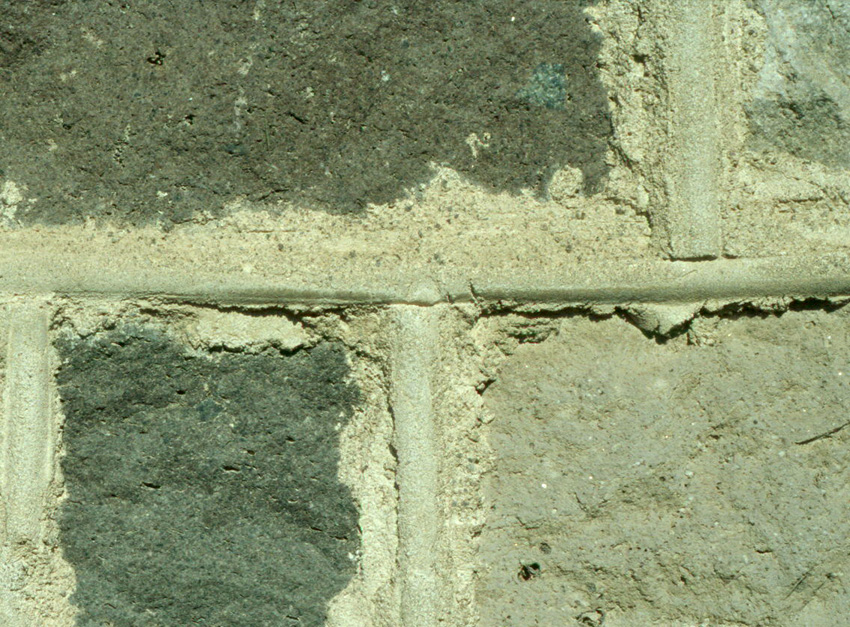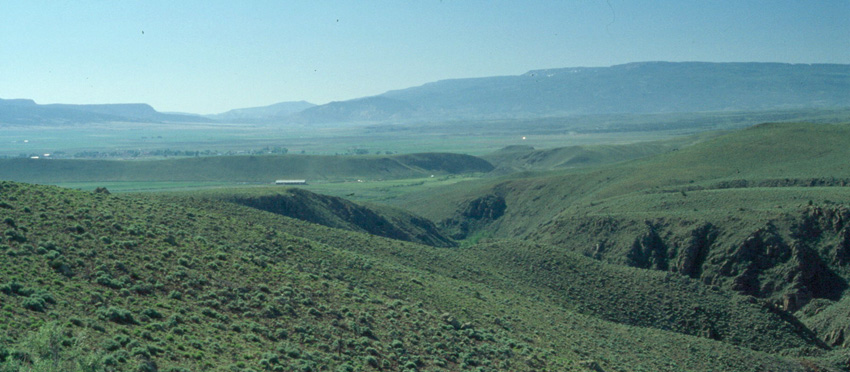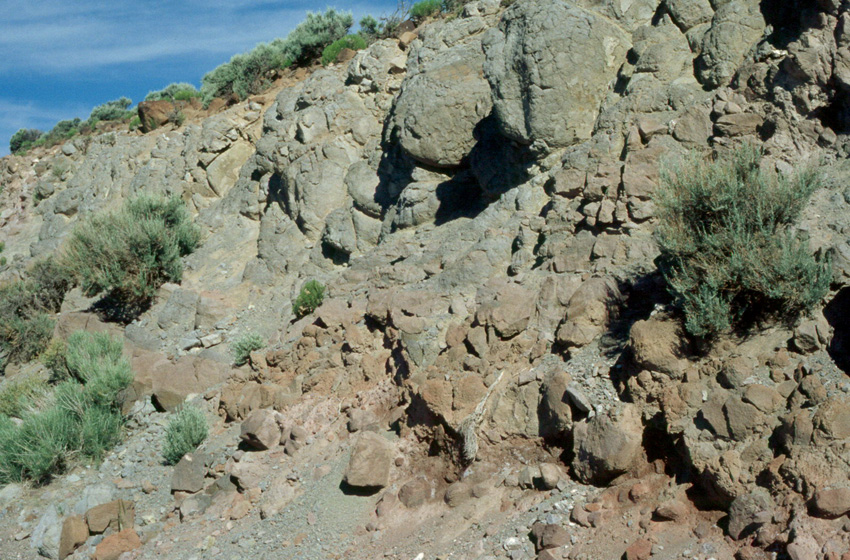
Mr. Albrecht certainly produced a striking structure from local materials. Most of the building is basalt (the black rock) with quoins or corner pieces of andesite (the lighter rock) (see below). Quoins are commonly used where the principal rock of a building is too weak or irregular in shape to make a corner, but that wasn't the case here; the basalt blocks would have made a good corner. Mr. Albrecht apparently used the lighter-colored rock on the corners simply for aesthetic considerations.

The use of volcanic rock was dictated by Loa's geologic environment. Loa sits on the plain of the Fremont River, and the only nearby stone is Tertiary-age volcanic rocks to the west. In fact, Loa's name is a reference to Mauna Loa, the huge Hawaiian volcano of basalt, and at least one more modern building in Loa is faced with (but not built of) basalt as well. The photos below show a view of the basaltic hills above the town, and a hilltop outcrop of volcanic rocks.

